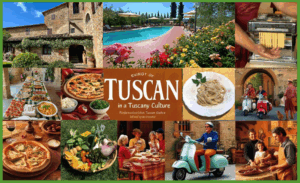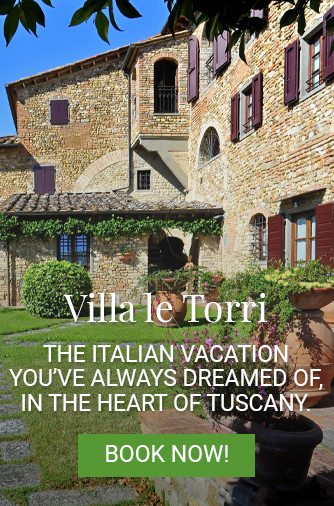10 Things to Know Before Arriving in Italy – Especially in Tuscany – with Fresh Eyes and an Open Heart
Italian Habits: The Heart of Everyday Life Between Culture and Little Surprises
Italy is not just a destination; it’s a sensory experience. It’s the aroma of coffee in the morning, the sound of church bells in the piazzas, and the flavor of traditional recipes passed down through generations. Time slows down here. Flavors tell stories. Every gesture—a greeting, a coffee, a smile—has a deeper meaning.
This is a country that invites human connection, wonder in the little things, and the art of being present. Italians speak with emotion, expressing themselves with gestures and warmth. A visitor isn’t just a tourist—they’re a welcomed guest, met with curiosity and generosity.
Some local habits might surprise you, but that’s where the real magic of Italy lies. And if Italy is a living masterpiece, Tuscany is its beating heart.
Understanding the culture, rhythms, and traditions of Italy isn’t just helpful—it’s the first step to truly living it.
This is not a list of rules—it’s an invitation to step into a different way of life. Because Italy is beauty, yes—but also slowness, complexity, and small, meaningful gestures. If you know where to look, it will change you forever.
Keep reading with an open heart. Your experience starts here.
1. Time in Italy is Emotional, Not Just Practical
Yes, schedules exist. But often they yield to human connection, atmosphere, and seasonal flow.
- Many shops close between 1:00 PM and 4:00 PM for a lunch and rest break.
- Dinner is later than you might expect—usually after 7:30 PM.
- Sundays are still sacred—many businesses close to make room for family and rest.
Expect less efficiency, more humanity. Learn to enjoy waiting—it often brings unexpected joys.
2. Food is a Cultural Ritual
In Italy, meals are a time to connect, converse, and appreciate the moment. Even in restaurants, don’t expect fast service or an immediate bill. Eating is a sacred ritual, not just a necessity.
- Coffee is espresso, quick and usually enjoyed at the bar.
- Cappuccino is for breakfast only—never after lunch.
- Water in restaurants is almost always bottled and not free.
- Portions are designed for taste and balance, not quantity.
- Bread is typically served without butter or oil—it’s a side, not an appetizer.
- There’s no single “Italian cuisine”—only a rich tapestry of regional traditions.
- The most authentic meals are often the simplest and humblest.
- Restaurant menus often reflect the seasons.
- Courses are served in this order: antipasto, primo, secondo, contorno, dolce. You don’t need to order them all, but the sequence is respected.
- Pasta is always al dente.
- Italian breakfast is usually just coffee and a pastry, enjoyed standing at the bar.
- Meal times are fixed and respected.
- Taking leftovers or ordering food to go is uncommon in traditional restaurants, though it’s becoming more accepted.
- Never put cheese (like Parmesan) on fish dishes.
- Wine is savored, not poured in excess.
Expect slow rhythms, simple dishes, and fresh ingredients. What might seem like slow service is actually a sign of respect for the meal.
3. Communication Goes Beyond Words
Italian communication is highly expressive, and much is said without words.
- Italians talk with their hands—gestures are part of the language.
- Facial expressions often show exactly how someone feels.
- A loud tone doesn’t mean anger—it usually signals enthusiasm.
- Eye contact is seen as a sign of trust and sincerity.
- Touch is common—a handshake, a friendly kiss on the cheek. It shows warmth, not intrusion.
- Each region in Italy has its own gestural language.
- Tone of voice matters just as much as the actual words.
You don’t need perfect Italian. A warm “ciao”, a smile, and a little patience go a long way.
4. Tips, Payments, and Cash: Navigating with Courtesy
- Tipping is not expected, but 5–10% is appreciated for good service.
- A “coperto” (cover charge) is usually added to your bill—typically €1–3 per person.
- Bring some cash—especially in smaller towns or local markets.
- Credit cards are widely accepted in cities, but always ask first, especially in rural areas.
- In restaurants, the bill doesn’t come automatically. You must politely ask for it.
- More than the amount you leave, it’s kindness and respect that matter most.
5. Wi-Fi and Staying Connected
- Wi-Fi is often available, but may be slow or unstable, especially in the countryside or historic centers.
- You’ll usually need to ask for the password in restaurants or hotels.
- A local SIM card or eSIM is the most reliable way to stay connected.
- Download offline maps, translators, and travel apps in advance.
- WhatsApp is the most commonly used app for communication, even with hotels and restaurants.
- Sometimes, disconnecting opens the door to real connection.
6. What to Pack (Besides Clothes)
- A European adapter (type C or L plug).
- Comfortable walking shoes—you’ll encounter cobblestones, stairs, and hills.
- A light scarf or shawl—handy for churches or cool evenings.
- Both cash and cards—carry some euros for small purchases, but cards for larger ones.
- Helpful apps: offline maps, translators, WhatsApp, digital tickets.
- Bring patience and flexibility—unexpected detours often lead to beautiful surprises.
- Most importantly, bring an open heart—curiosity and kindness will take you far.
7. What Surprises (and Enchants) First-Time Visitors
- Beauty is everywhere—in the architecture, the streets, the everyday.
- Simplicity touches the soul—a tomato, a glass of wine, a sunset.
- People are often spontaneously kind—a stranger might help you, a local may share a story.
- Life moves at a gentler pace—you don’t run; you flow.
- Every conversation is alive—full of expression and feeling.
- History is all around you—sometimes quite literally under your feet.
- You’ll feel a kind of warmth in the air—and it stays with you, long after you’ve gone home.
8. Getting Around Italy: Travel Tips
- High-speed trains (like Frecciarossa or Italo) are efficient and comfortable between major cities. Book early for the best prices.
- Regional trains are slower, but great for exploring towns and smaller cities. Expect occasional delays, and enjoy the view.
- Buses are useful in towns but may not run at night or on holidays—check schedules carefully.
- Taxis must be called or taken at official stands. They don’t stop on the street like in other countries.
- Uber is only available in some large cities.
- Renting a car is useful in rural areas like Tuscany, but be careful with ZTL (limited traffic zones) in historic centers—you could get fined.
- Walking is part of the experience—historic towns are made to be explored on foot.
9. Greetings Matter in Italy
- Always say “Buongiorno” or “Buonasera” when entering shops or meeting someone—it’s a sign of respect.
- Use “Ciao” only with people you know—it’s informal and friendly.
- In cities, greetings are short and formal. In villages, they’re more personal and warm.
- A small greeting creates connection—even in brief encounters.
10. Driving in Italy and Using the Highways: What You Need to Know
Driving in Italy can be both practical and poetic—especially if you’re planning to explore regions like Tuscany by car.
- Highways (Autostrade) have tolls
You pay based on the distance traveled. Take a ticket when entering, and pay at the exit (by card or cash). - Watch out for ZTL (Limited Traffic Zones)
These restricted areas are found in many historic city centers. You can be fined if you enter without a permit—and yes, the fines can reach you even abroad. - Gas stations
Some are self-service, others have attendants. At night or on holidays, they may only work automatically.
Diesel is called “gasolio”, unleaded petrol is “benzina senza piombo”. - Left lane = overtaking only
On the highway, the left lane is used strictly for passing. Staying there unnecessarily is frowned upon—and dangerous. - Roundabouts are common
Those already inside have the right of way, but not everyone follows the rule. Drive calmly and stay alert. - Standard speed limits
- Highways: 130 km/h
- Country roads: 90 km/h
- City roads: 50 km/h
During rain or fog, these limits may be lower.
- Use GPS—but trust the road signs too
Navigation apps are helpful, but they often don’t show brown signs pointing to cultural or tourist landmarks. - Parking colors matter
- Blue = paid parking
- White = free (if not reserved)
- Yellow = reserved (e.g., residents, disabled)
- Always carry your documents
You must have your driver’s license, passport/ID, and car rental documents with you at all times.
In Summary: How to Truly Prepare for Italy
Traveling in Italy is not just about organization—it’s about mindset.
If you arrive with strict expectations, you may feel frustrated.
But if you come with curiosity, humility, and a listening heart, you’ll be transformed.
“Prepare with your heart, not just your suitcase.
Italy doesn’t need to be understood—it welcomes you, if you’re ready to feel it.”

Tuscany with Soul: An Invitation to Feel, Not Just See
Tuscany is not just a region to visit—it’s a place to breathe, listen, and live. It’s an experience meant to be felt.
This land speaks softly, but it speaks straight to the heart. It welcomes you with rolling hills, the whisper of cypress trees, and villages frozen in time. Every corner hides an ancient, understated beauty: the smell of fresh bread, the sound of midday bells, the light that warms the stone streets.
Here, food is a gesture of love, people are authentic, and time follows a human rhythm.
Tuscany surprises quietly. It moves you with its simplicity—and that’s what stays with you.
To truly live it, you don’t need much: time, an open heart, and the willingness to be changed, just a little.
Because in Tuscany, even those who come from far away… can feel closer to themselves.
Tuscany with Soul: Local Tips You’ll Only Learn Here
Tuscan Cuisine: Simplicity at its Heart
- Bread is “sciocco” (unsalted) – strange at first, but perfect with salty cured meats and soups.
- Soups are royalty – ribollita, pappa al pomodoro, acquacotta: authentic comfort food.
- Local wines like Chianti, Brunello, and Vino Nobile di Montepulciano are sipped slowly, with respect.
- Many restaurants are family-run – more heart, more time, less formality.
- Bistecca alla fiorentina is a ritual: thick, rare, and proudly Tuscan.
- “Poor” dishes like ribollita and pappa al pomodoro tell stories of a land that values simplicity.
The Tuscan Rhythm
- Life still follows the seasons and rural traditions.
- Midday breaks are real – shops close, people rest.
- Conversations are not rushed—the pace is unhurried by design.
The Tuscan Spirit
- Tuscans are direct, witty, and real. If they joke with you, it means they’ve welcomed you.
- Sarcasm is an art—don’t take it personally. Smile and join in.
- Expect colorful expressions and dialect. Listen, laugh, and maybe learn a few words.
Language and Warmth
- The Tuscan dialect has a unique sound—the letter “C” often becomes an “H”.
- In small towns, language is identity. You might not understand everything, but you’ll feel the warmth.
Getting Around Tuscany
- Scenic drives through Val d’Orcia and Chianti are stunning but winding—take it slow.
- A car is recommended for exploring rural villages; trains mainly serve the cities.
- Historic centers are mostly ZTL zones—park outside and explore on foot. That’s where real beauty lives.
Hidden Surprises
- A sunset behind the cypress trees is worth more than a thousand photos.
- Local festivals are chaotic, authentic, and full of food and music.
- Every village has a story—don’t only chase famous sights; let yourself get pleasantly lost.
- Many places don’t offer English menus—ask, trust, and taste.
What Stays With You
- The scent of fresh grass, baking bread, and grape must in autumn.
- The deep silence of the hills.
- The soft evening light over stone villages.
- The way people look into your eyes and truly listen.
- Breathtaking landscapes: rolling hills, cypress lines, endless vineyards.
- Timeless villages: San Gimignano, Volterra, Pienza—they feel like paintings.
- Authentic food: lampredotto, pappa al pomodoro, and ribollita continue centuries-old traditions.
- The Tuscany slowness: here, time expands—and every sunset is a poem.
“Don’t come to Tuscany just to see. Come to feel.
Taste the silence of the hills, the scent of warm bread, the caress of the wind through the olive trees.
Tuscany isn’t just a place you visit—it’s a place you live, even if only for a few days.”

From My Point of View: The Tuscany I Live and Love
Managing Villa and Terri for 27 years has been much more than just a job for me. It’s a passion that grows day by day, a deep connection with my land and the people who visit it. Every guest who comes to our villa brings a new story, a new encounter, and in every instance, I feel lucky to be able to share the authenticity and beauty of Tuscany with them.
What always strikes me, and what guests truly appreciate, is our warmth and willingness to help. In this corner of Chianti, far from the hustle and bustle of the cities, life moves at a slower pace, and perhaps it is here, more than anywhere else, that you can truly feel the importance of stopping, smiling, and offering a helping hand to those in need.
A Gesture of Solidarity That Made Me Proud
I remember a story that made me especially proud to be Italian. A guest had a flat tire on their car and thought they would have to reach Florence Airport, about 30 minutes away, to change it. Unfortunately, they didn’t make it, but during that difficult moment, they found help from many people who stopped to lend a hand. That gesture, which might seem simple, made me realize how special Italy is and how deeply ingrained solidarity and mutual support are in our culture.
Many Italians, like me, may not speak perfect English, but we are incredible at communicating with our hands and with our hearts. Every day, in every gesture, I find confirmation that the true heart of Tuscany is made of love, generosity, and a beauty that goes beyond words.


